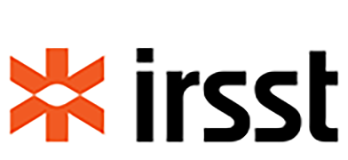Assessing the treatment response of lateral elbow tendinopathy using time-dependent ultrasonography, Doppler imaging, and elastography
Type de document
Études primaires
Année de publication
2024
Langue
Anglais
Titre de la revue
Insights into Imaging
Résumé
Objective: To investigate the structural alterations, neovascularity, and elasticity of tendons and the relationship between elasticity and the Patient Rated Tennis Elbow Evaluation score after undergoing US-guided fenestration or surgery in patients with chronic lateral elbow tendinopathy. Methods: Participants from the per-protocol population of a randomized trial conducted between October 2016 and June 2020 were included. The surgery and fenestration groups included 24 (mean age, 50 ± 7 years [standard deviation], 10 men) and 29 (47 ± 8 years, 18 men) participants, respectively. Ultrasound exams were performed at baseline, 6 months, and 12 months. Statistical analyses included linear mixed effects and generalized equation estimation models. Results: Fenestration had no significant impact on tendon thickness (p = 0.46). Conversely, surgery significantly increased tendon thickness at 6 months (p < 0.0001) and remained elevated at 12 months (p = 0.04). Tendon echostructure exhibited a group effect (p = 0.03), indicating a higher proportion of pathological scores in the surgery group post-intervention compared to the fenestration group. Both groups showed a similar reduction in neovascularity from 6 to 12 months postintervention (p = 0.006). Shear-wave velocity increased in the fenestration group at 6 months (p = 0.04), while the surgery group experienced a nonsignificant decrease at 6 months, with some improvement at 12 months (p = 0.08). Changes in shear-wave velocity did not correlate with clinical outcome. Conclusions: Fenestration and surgery reduced tendon neovascularity over time. Unlike surgery, fenestration did not impact tendon size while improving tendon echostructure and elasticity. Critical relevance statement: Fenestration and surgery equally alleviated symptoms and decreased tendon neovascularity in lateral elbow tendinopathy; however, fenestration did not alter tendon thickness and improved echostructure and shear-wave velocity, suggesting shear-wave velocity’s potential for quantitatively monitoring tendon elasticity during healing. Key Points: Reliable markers for monitoring healing response and informing treatment protocols in elbow tendinopathy are lacking. Fenestration and surgery reduced tendon neovascularity, while fenestration improved tendon echostructure and shear-wave velocity. Shear-wave velocity may provide quantitative measures to monitor tendon elasticity in response to treatment. Graphical Abstract: (Figure presented.). © The Author(s) 2024.
Mots-clés
Tendinite, Tendinitis, Coude, Elbow, Examen aux ultrasons, Ultrasonic examination, Ténopathie, Tendon disease
Numéro de projet IRSST
2015-0034
Citation recommandée
Tobaly, D., Tétreault, P., Cloutier, G., Choinière, M., Grondin, P., Freire, V., . . . Bureau, N. J. (2024). Assessing the treatment response of lateral elbow tendinopathy using time-dependent ultrasonography, Doppler imaging, and elastography. Insights into Imaging, 15(1), article 113. https://doi.org/10.1186/s13244-024-01695-8

